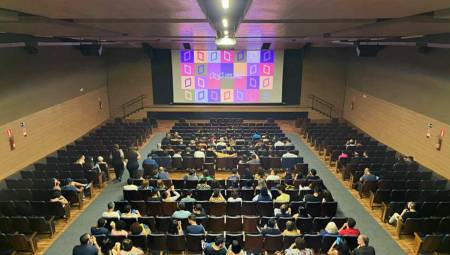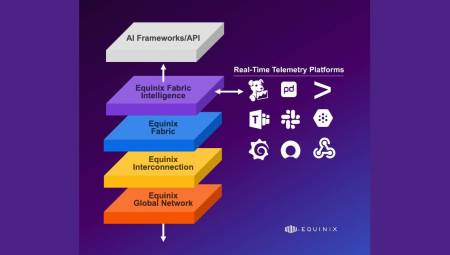 Colombia. Given the arrival of the Coronavirus in Colombia, the Government is promoting teleworking as an alternative to reduce the risk of contagion, because it allows avoiding face-to-face meetings and crowds. Therefore, the ICT Ministry, as an authority on the subject, explains in detail what this type of work consists of and how it is regulated in the country.
Colombia. Given the arrival of the Coronavirus in Colombia, the Government is promoting teleworking as an alternative to reduce the risk of contagion, because it allows avoiding face-to-face meetings and crowds. Therefore, the ICT Ministry, as an authority on the subject, explains in detail what this type of work consists of and how it is regulated in the country.
What is teleworking?
In Colombia, teleworking is defined in Law 1221 of 2008 as "a form of labor organization, which consists of the performance of remunerated activities or provision of services to third parties using information and communication technologies -ICT- as support for contact between the worker and the company, without requiring the physical presence of the worker in a specific workplace". (Article 2, Law 1221 of 2008).
What are the modalities of teleworking?
Self-employed: are those who use their own home or a place chosen to develop their professional activity, which can be a small office or a commercial premises. In this type are people who always work outside the company and only go to the office on some occasions.
Mobile: are those teleworkers who do not have an established workplace and whose primary tools to develop their professional activities are Information and Communication Technologies, on mobile devices.
Supplementary: are those teleworkers who work two or three days a week at home and the rest of the time they do it in an office.
How is teleworking regulated in Colombia?
Teleworking in Colombia is regulated by Law 1221 of 2008 and Decree 884 of 2012 that regulates it.
Law 1221 of 2008: Establishes the recognition of telework in Colombia as a labor modality in its forms of application, the bases for the generation of a public policy to promote telework and a public policy of telework for the vulnerable population. It creates the National Network for the Promotion of Telework, in order to promote and disseminate this practice in the country and includes labor, union and social security guarantees for teleworkers.
Decree 884 of 2012: Specifies the working conditions that govern telework in a relationship of dependency, the relations between employers and teleworkers, the obligations for public and private entities, the ARL and the Promotion Network for telework. It also establishes the principles of voluntariness, equality and reversibility that apply to the model.
What should a company or entity do to implement teleworking?
Request an implementation consultancy from MinTIC.
The implementation methodology establishes 5 fundamental steps:
1. Institutional commitment (wanting to do so)
2. Planning (organize the process - schedule)
3. Self-evaluation (internal review of the human, technical, legal and technological resources available to the organization)
4. Adoption and implementation
What does MinTIC offer to accompany the implementation of Teleworking?
The objective of the Telework initiative of the Ministry of ICT is to massify this type of work in the country, as an instrument to increase the productivity levels of public entities and private organizations, generate more sustainable mobility, improve the quality of life of workers and promote the effective use of ICT. To this end, the ICT Ministry offers:
Free virtual and face-to-face initial advice
Face-to-face and virtual training
Information
What advantages does teleworking offer?
Contribution to the digital transformation of the country.
Reduction of fixed costs in companies.
Increased productivity.
Improvement of the quality of life of workers (work-life balance).
Social inclusion.
Contribution to the improvement of mobility in cities.
Reduction of pollution rates.
Promotion of the use and appropriation of new technologies.
Contribution of more sustainable cities.
What is the Telework Pact?
It is an agreement of intent that is signed between the Ministry of ICT, the Ministry of Labor, and the interested entity, with the aim of generating a cooperation framework to promote and massify telework in Colombia.
Organizations that are linked to the "Pact for Telework" receive the following benefits:
Free access to the national telework training program.
Technical support to your organization in the implementation of the teleworking model.
Access to teleworking workshops and events that take place during the year in your city.
Similarly, the signatory organization is committed to implementing the teleworking model in its organization and supporting its massification in the country.
How can I access advice from the ICT Ministry?
All consultancies are free and can be accessed by registering through the form hosted on the website www.teletrabajo.gov.co
How many people telework in Colombia?
In Colombia, according to the most recent study of telework penetration, carried out in July 2018 for MinTIC by the Colombia Digital Corporation and the National Consulting Center, the number of teleworkers in our country has increased by more than 385% in recent years, going from 31,500 in 2012, to more than 122 thousand teleworkers in 2018.
The study indicates that Bogotá is consolidated as the city with the highest number of individuals operating under this modality, with 63,995.
According to the report, Medellín (29,751), Cali (13,379), Bucaramanga (4,992) and Barranquilla (4,827), are the other cities in the country that concentrate more teleworkers. The document also reveals that the service sector is the one that hires the most in this way, with 86,116 people employed. It is followed by commerce, with 26,444 remote employees.
Similarly, the study reveals that the number of companies that implement teleworking tripled in recent years, going from 4,300 in 2012 to 12,900 in 2018, that is, there was an increase of 300%. This figure reveals that more and more companies and public entities are betting on teleworking, finding results of efficiency, cost reduction and increased productivity.
The study also reveals that SMEs are the companies that have the most remote employees in their work plants, since it is estimated that 87,439 are part of their workforce. Medium-sized and large companies follow with 25,918 and 8,921 teleworkers, respectively.









































































































